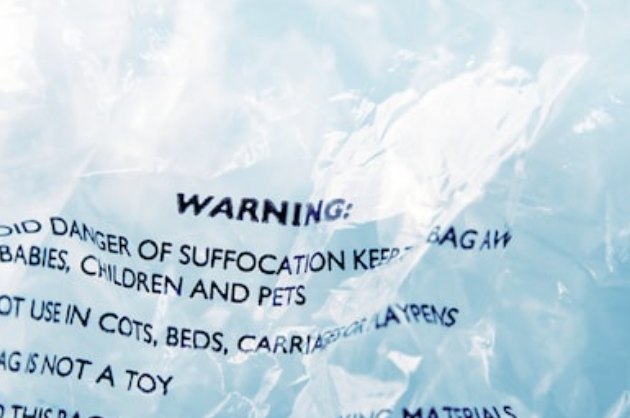We all want our homes to be a safest place for our children. However, despite every parents best efforts, accidents do happen.
The type of accident we will discuss is falling furniture.
The Tipping Facts.
Most accidents happen when a child is alone in a room and climbs up drawers or shelves. At 2 years old and walking, a child may start exploring the home without constant observation. Certain rooms may hold their interest more, specifically ones with their toys or games in. They may try to reach for their toys kept in drawers or in shelves, turn the TV on, or just do what kids do by being curious.
The U.S. Consumer Product Safety Commission (CPSC) reports that in the U.S., a child is sent to the emergency room every 30 minutes as a result of falling furniture.
Data from a 2018 CPSC report demonstrates the scope of the problem:
- A child dies every two weeks as a result of falling televisions, furniture, or appliances
- 83% of tip-over deaths involve children between 1 month and 14 years old
- 2 year olds are the age group most affected by tip-overs, and are most likely to be killed
- 92% of tip-over fatalities occur in a residential setting
- 46% of fatalities occur in bedrooms and 19% in living/family rooms
- Crushing by the product (55%) were the most common category of death
See previous reports of the 2016 CPSC report and the Kids in Danger Stability Report for further research.
Why have so many accidents occurred?
It’s awful to see the above figures of accidents and deaths that have happened in just the past year, highlighted again by a recent series released from Netflix, “Broken”.
Bearing in mind the severity of the injuries and the exposure of the results, why is the number still so high?
There are many reasons but one key issue is, consumers are completely unaware of the risks and how to mitigate them. This is highly unlikely to be their fault as there is not much information out there highlighting the precautions a parent can take to safeguard their children from these risks. There is far more information about how the retailers are incompetent or supply poor quality products.
The most common mitigating action is to attach a suitable anchor to the product. This must also be in the ideal location to suitably support the weight of the product and pressure in key areas. Usually this is provided with the product and explained in the instruction manual.
Granted, the instruction manuals highlight the wall strap, when it’s provided, however there could be more exposure given to it with in-depth instructions online or videos.
Another factor could be, the product may be supplied with a wall strap but they are poor quality fittings that are not universal to all wall types. There are many different types of anchors available and not all are created equal. With products such as cheap wardrobes that require wall straps, they can be near impossible to fit properly!
The good news is…the risk of tipping CAN be reduced!
Stability Standards.
Currently, there is no mandatory safety and stability test standard for children’s cabinetry furniture. Manufacturers and Retailers are governed by the General Product Safety Directive that puts the onus on them to ensure their products are fit for purpose and safe for the intended users.
But don’t panic! Most UK retailers will ensure children’s furniture is tested for safety and stability to FRQG test standards, EN71 or an approved equivalent alternative (where relevant), prior to selling the products to the consumers.
FRQG standards have been designed by FIRA and agreed with a panel of furniture industry experts for best practice. ASTM F2057 is the voluntary standard used in the USA.
What expect.
Due to the increasing demand to make products cheaper and quicker production lead times, manufacturers often provide insufficient quality fixings. You have most likely experienced this yourself, you buy a cabinet but find the fixings are useless so you have to take a trip to the local DIY store! Well this is no different for the wall straps usually provided.
You may wonder what precautions Retailers take prior to putting the product on sale?
Retailers have a sign-off procedure they follow before every launch of new products. Along with a long list of check points, their Quality teams should retrieve the test reports for the product being supplied and, in most cases, conduct a test build of the items (to imitate the customers experience).
If problems are found or insufficient materials are being provided, and the retailers think it needs improvement, the manufacturer has the duty to make those changes prior to shipping.
Tipping Preventions.
So what can we do to put more stringent measures in place?
Consumer recommendations (KID):
- Buy furniture with a wider base, heavier back panel, and/or interlocking drawers
- Buy furniture that meets a voluntary standard regarding furniture stability
- Anchor or permanently secure the furniture to the wall using suitable wall restraints
- Do not place a TV on furniture unnecessarily and keep TV cables and cords out of reach
- Reduce climbing temptations by keeping objects such as toys and remote controls off of furniture
What can Retailers do?
- Increase consumer awareness of the danger of furniture tip-overs and knowledge of the actions needed to keep children safe
- Ensure all children’s furniture is tested to the appropriate standards, making those standards mandatory and enforceable, promoting changes in children’s furniture safety standards
- Include in the instruction manual a wall anchoring guide suitable for wall types and floor surfaces e.g. a screw and stud for drywall
- Provide free fixings where missing from the packaging or insufficient quality is provided
- Add appropriate labelling to the items and packaging
- Demonstrate the suitable location of the wall strap with bradawl marks or predrilled holes for the attachment
- Train the sales teams and customer services to understand and advise consumers on the relevant anchor methods
- Provide incentives or triggers for consumers
As a large proportion of consumers don’t read or follow the instruction manuals provided (we all know that person!), FIRA suggested minimum label information for manufacturers permanently attach inside the chest drawer to remind the consumer to take safety precautions.
Further measures.
As a result of the findings, CPSC created the Anchor It! campaign. The campaign’s purpose is to educate caretakers about the danger of falling furniture through videos, explanations of dangers and what extra precautions can be added to your products.
Baby Proofing
Have you considered baby proofing your drawers! There are numerous ways to do this, my top three are:
- Anchors
- Magnetic locks/keys
- Tension rods
IKEA
After receiving a lot of negative exposure, Ikea has issued a short guide on their website to help customers understand how to secure their products safely here.
Final note.
Supply chains always focus on customer satisfaction, however, It’s important to keep in mind what really matters – the safety of consumers comes first.
So before you finalise that new product design, or agree on material costs, think about the safety and quality of your products. Are they suitable to provide adequate preventative measures? Are you making it clear to the consumer what the risks are and how to mitigate them?
I look forward to hearing your feedback and any updates you may have.











You must be logged in to post a comment.